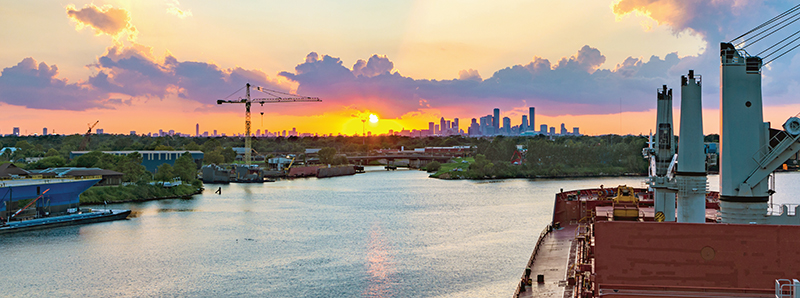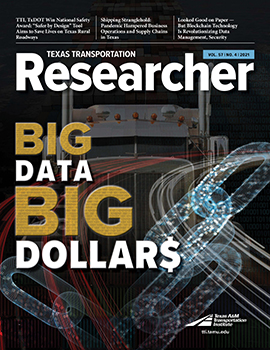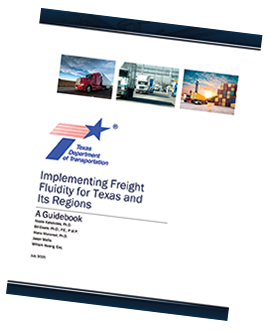The efficient movement of goods is vital to the Texas economy, whatever the mode of transportation — via airports, highways, railways or waterways. Any disruption in the supply chain that prevents goods from moving efficiently can add not only to the costs of producing and shipping goods, but also to the variability and pricing of goods for consumers.

The Texas Department of Transportation recently sponsored the development of the guidebook Implementing Freight Fluidity for Texas and Its Regions by the Texas A&M Transportation Institute (TTI). The guidebook is structured to help transportation decision makers understand what freight fluidity is and provides methods for analysis that help illustrate the value of freight fluidity, including
- being aware of goods moving through a region,
- understanding current economic conditions and supply chain opportunities,
- using economic/supply chain intelligence to identify key trip routes for freight, and
- assessing freight mobility and bottlenecks along these trip routes.
“The guidebook provides a central source of information for transportation professionals eager to understand and apply freight fluidity,” says TTI Senior Research Engineer Bill Eisele, one of the guidebook’s lead authors. “With insights from the guidebook, integrating freight fluidity into freight transportation planning processes can support investment and operational decisions.”
To help improve the reliability and efficiency of its supply chains, Transport Canada — the government agency responsible for Canada’s transportation policies and programs — turned to TTI over a decade ago to better understand the reliability and fluidity of its cross-country freight supply chain. The term freight fluidity describes a new way of measuring the various freight components of the overall transportation system. Simply put, freight fluidity measures trip performance to determine how efficiently goods are moving in a region. It involves answering questions like: What are the goods? How do they get from point A to point B? What’s the route?
The guidebook uses the concept of freight fluidity to provide users with resources and simple steps for integration into existing transportation efforts to ensure freight is more effectively considered in planning, policy, project development and operations. The authors provide a matrix to help determine how best to apply freight fluidity based on each user’s role. The matrix can be followed by either finding the question you need to answer or identifying your role. For example, if you need to know where freight bottlenecks are, the matrix will point you to those sections of the guidebook. If you’re not sure what questions you need answered related to freight but can identify your role within a transportation agency, you can find your role and then the relevant sections in the guidebook.

“When states consider freight fluidity, they can prioritize investments that best address and resolve bottlenecks that impact their economy,” says TTI Research Scientist Nicole Katsikides, a co-author on the guidebook. “Without the fluidity lens, states may be missing opportunities that would help sustain and grow businesses and jobs in their region.”
Katsikides notes that by using fluidity in assessments of how freight moves through a region, states can improve business efficiency, making for a good economic climate and lower cost of living. “Having the trip lens of fluidity helps states to know the key corridors supporting industry in their state. They can address congestion as well as understand safety, environmental and asset issues that can challenge efficient goods movement,” she says.
As the application of freight fluidity becomes more universal, analysis should continue to advance toward working with freight stakeholders (e.g., business, shippers and carriers) to obtain multimodal mobility data and enhance freight fluidity analysis. In this way, the use of Big Data underlying freight movement analysis can provide a more complete picture to better inform all stakeholders in the process.
“TTI has had the unique opportunity to share in the early development of the freight fluidity concept and apply it across a number of geographies — corridor, state, regional, national and even international,” Eisele says. “These experiences are captured in the guidebook with a vision of ubiquitous freight fluidity information across global supply chains.”

